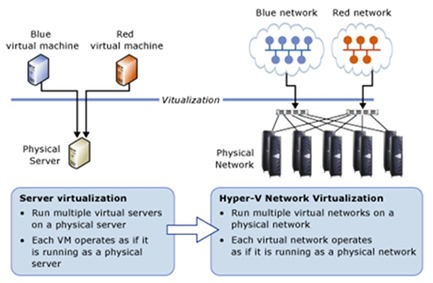Tip of the Day: Understanding Network Virtualization
Today’s (Networking) Tip…
Understanding Network Virtualization
The Virtualization Paradigm
Server virtualization allows multiple server instances to run on a single physical host, with each running as if it were the only instance on the hardware.
Network Virtualization provides a similar functionality. Through virtualization, multiple virtual networks can run atop a single physical network. As with the server example, each behaves as if it were the only instance even though multiple instances may actually be sharing the same physical resources.
The following illustration shows two separate networks, Red and Blue, running in a single datacenter.
Fig. 1: Comparison of Server and Network Virtualization
Network Isolation
Red and Blue share the same physical datacenter fabric. Despite that, isolation allows them to be secured and managed as individual units. It is also conceivable that they could be configured with overlapping address spaces! Both might be configured with the same class C network 192.168.1.0/24 for example.
The next couple of tips will take a 10 minute or less look at a few of the different isolation technologies including VLAN, PVLAN, and GRE.
